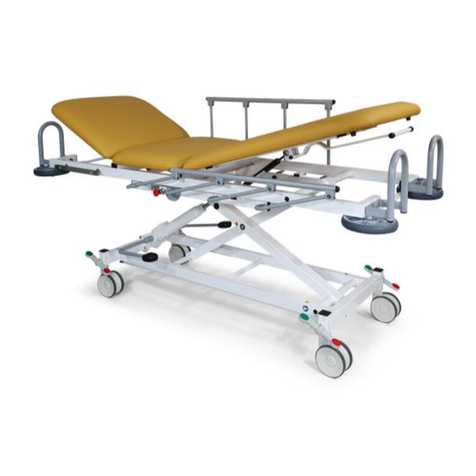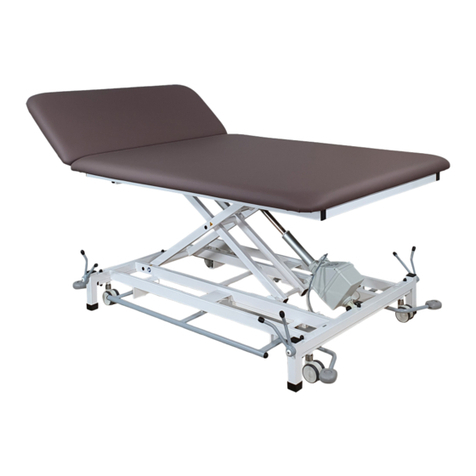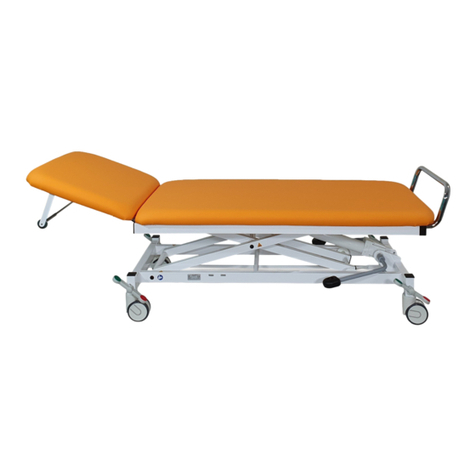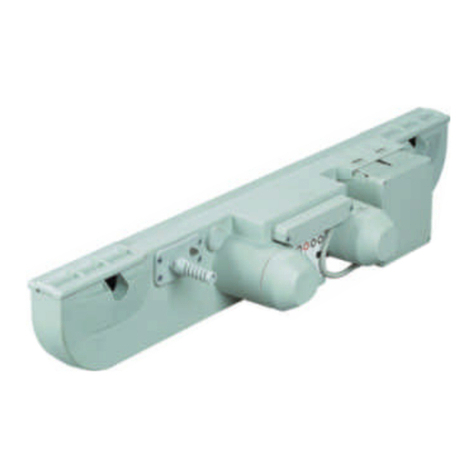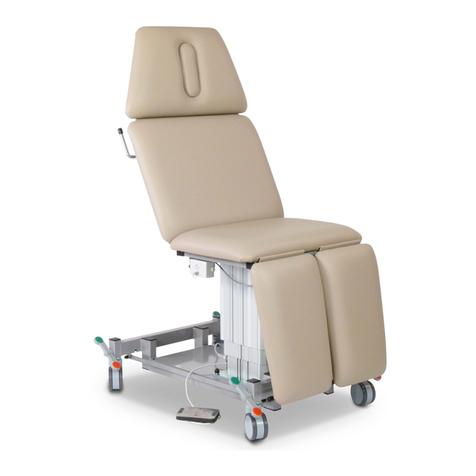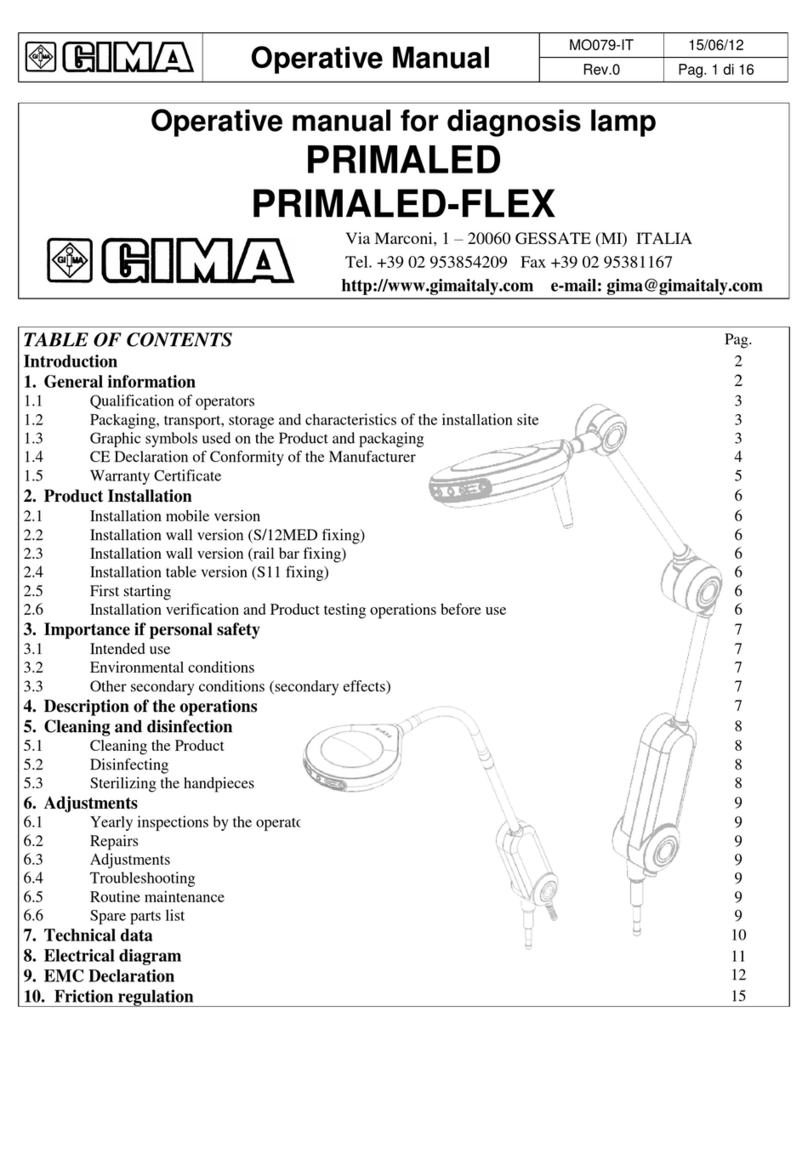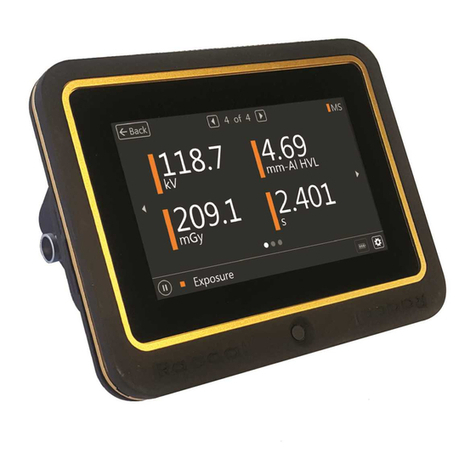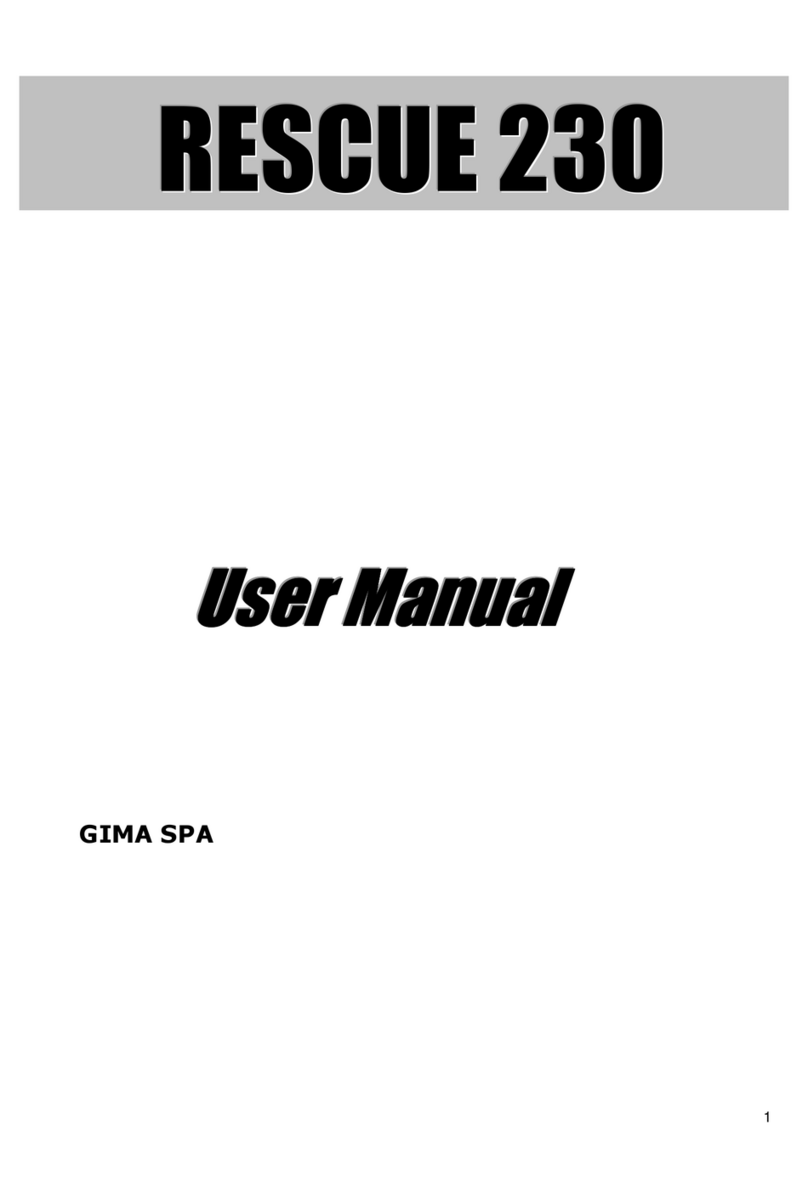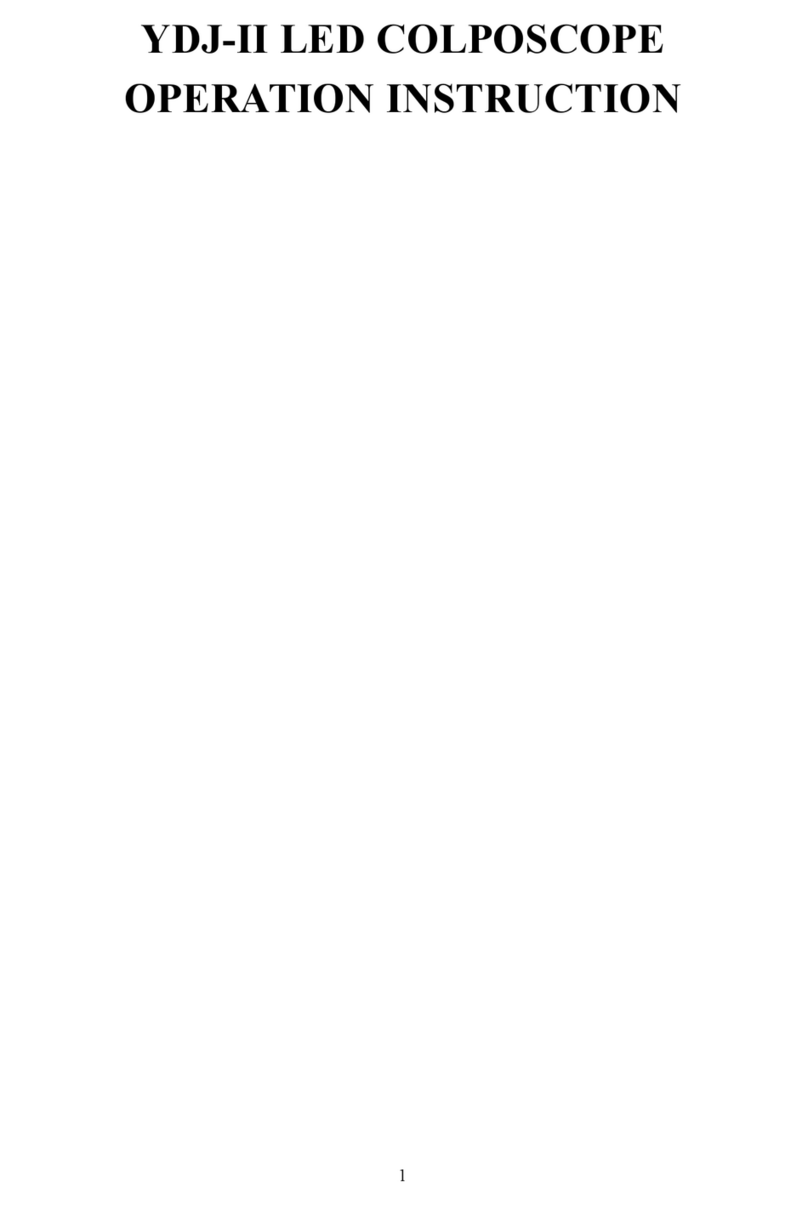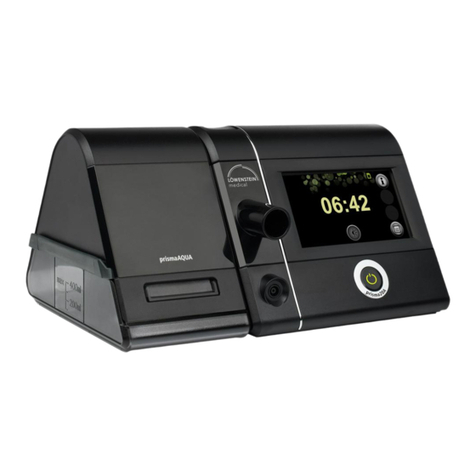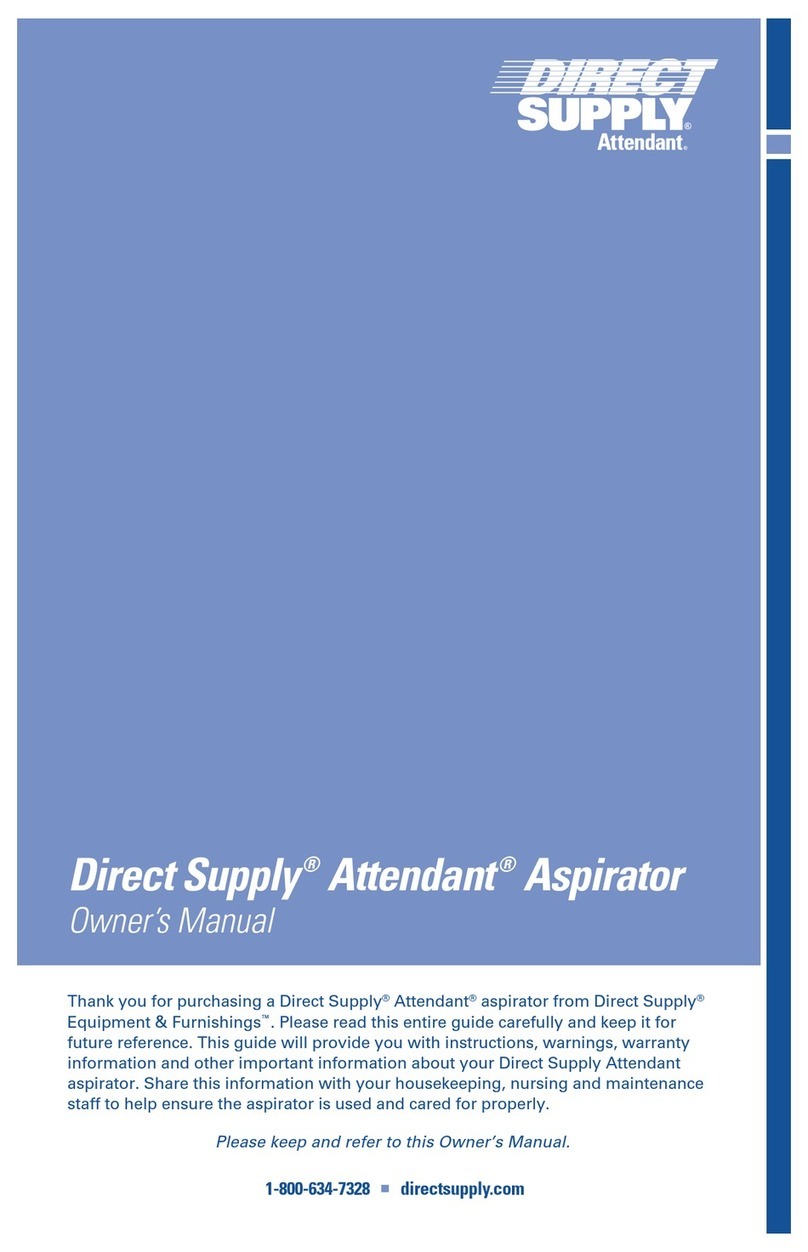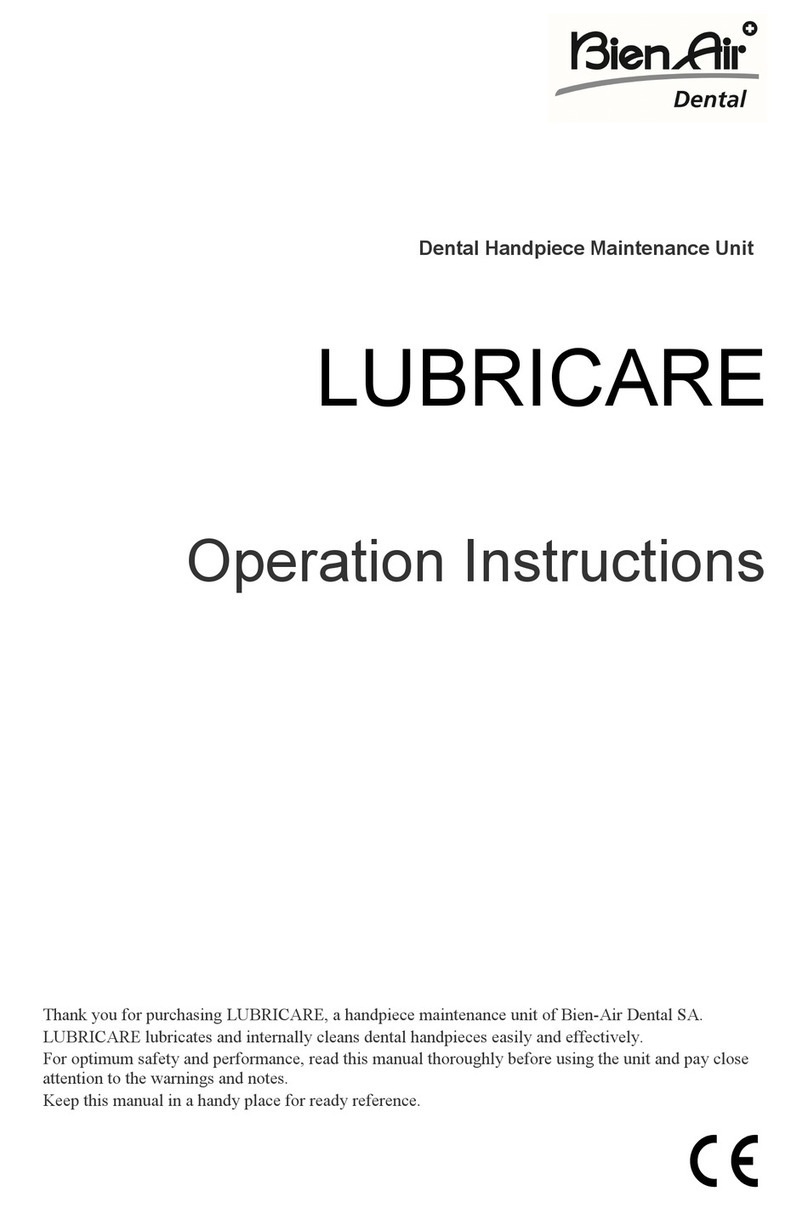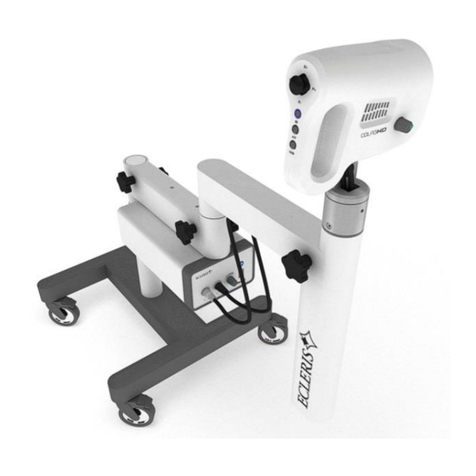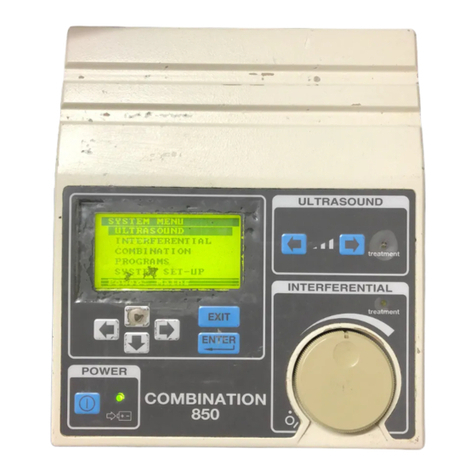Dewert 2410XL/H User manual

Dewert User Manual Model 2410XL - Updated 05.2021/1 MDR Page 1 of 12
User Manual
Model 2410XL/H
Dear customer,
Congratulations on purchasing a product of outstanding quality.
Use of the best materials from renowned suppliers guarantees years of trouble-free operation, provided the
device is handled correctly and as intended in accordance with the conditions described in the user manual.
In the unlikely event you need to make a claim, please contact us.
We welcome suggestions from the users of our products.
Contents
1. Safety information....................................................................................................................................... 2
1.1 Applied symbols.................................................................................................................................... 2
1.2 Applied standards................................................................................................................................. 2
1.3 Safety regulations................................................................................................................................. 2
1.4 Intended purpose.................................................................................................................................. 2
1.5 Information on setup and use............................................................................................................... 3
1.6 Commissioning..................................................................................................................................... 3
1.7 Safety instructions ................................................................................................................................ 3
1.8 Model designation and type labelling ................................................................................................... 4
1.9 Meaning of the serial number............................................................................................................... 4
2. Operating manual........................................................................................................................................ 4
2.1 Table design......................................................................................................................................... 4
2.2 Height adjustment................................................................................................................................. 4
2.3 Adjustment of the sections ................................................................................................................... 5
2.4 Movability.............................................................................................................................................. 5
2.5 Other attachment parts......................................................................................................................... 5
3. Additional accessories (for user-specific table configuration), in extracts .................................................. 6
4. Technical data............................................................................................................................................. 6
4.1 Technical data for model 2410XL/H ..................................................................................................... 6
4.2 Technical data for hydraulic system ..................................................................................................... 7
5. Cleaning instructions................................................................................................................................... 7
6. Maintenance and technical inspection........................................................................................................ 7
7. Reporting obligation.................................................................................................................................... 8
8. Disposal ...................................................................................................................................................... 9
9. Declaration of Conformity ......................................................................................................................... 10
K.H. DEWERT GmbH
Vollmestr. 7
33649 Bielefeld
Germany
Tel. +49 / 521 400 27-0
Fax +49 / 521 400 27-27
www.khdewert.de

Dewert User Manual Model 2410XL - Updated 05.2021/1 MDR Page 2 of 12
1. Safety information
1.1 Applied symbols
Safety instructions and key sections in this user manual are marked with the exclamation mark symbol on the
left. Please pay particular attention to these instructions and sections.
Other symbols possibly used on the device:
Observe instructions for use:
Risk of pinching when adjusting:
Risk of hazard zone:
1.2 Applied standards
This device has been designed and manufactured in accordance with national and international regulations.
This ensures a very high level of equipment safety.
The model described here complies with the following regulations and directives:
Regulation (EU) 2017/745
DIN EN ISO 14971
DIN EN ISO 10993-5/-10
DGUV Regulation 3
This device is a Class 1 medical device according to Regulation (EU) 2017/745 (MDR).
1.3 Safety regulations
This section contains a summary of the most important safety information:
Correct operation of the device is essential for safe operation. Therefore, please familiarise yourself with the
contents of these instructions for use before using the device. We recommend that you keep these
instructions for use near the device for future reference.
The device may only be used by authorised, instructed and competent persons who are sufficiently familiar
with its adjustment mechanism or have read and understood the operating manual fully. The manufacturer
cannot be held responsible for damage caused by or involving unauthorised persons.
The user must ensure that the device is not accessible to unauthorised persons or cannot be operated by
unauthorised persons even when left unattended.
When leaving the device, it should be secured in such a way that unauthorised adjustment is impossible.
Keep a sufficient safety distance to the device during all adjustment procedures. Special attention
must be paid to the arms, hands, legs and feet of the user and the patient - RISK OF CRUSHING!
Make sure that there are no objects located directly around or underneath the device!
1.4 Intended purpose
The table is used for the ideal positioning of patients for the purpose of curative and disease treatment,
examination, massage and health therapy.
Table operation and patient positioning on the table may only be performed by professionally trained persons
who have been instructed in its use or who, through experience with other similar medical devices, have
knowledge of its proper use, taking into account possible hazards.
Ideal positioning of patients for the purpose of transport to pre-treatment or post-treatment locations and
during the recovery phase after a medical procedure is also permitted under supervision.
This device has been developed exclusively for use indoors and in normal ambient conditions and can be
used in the following areas: laboratories, medical practices, examination and treatment rooms, hospitals,
clinics, physiotherapy practices, occupational therapy centres and doctors’ surgeries.

Dewert User Manual Model 2410XL - Updated 05.2021/1 MDR Page 3 of 12
This table is not classed as surgical furniture and must, therefore, not be used for surgical purposes.
The expected service life is 10 years or 100,000 drive cycles (double stroke = 1x up and down).
1.5 Information on setup and use
When packed, the device may be exposed to the following environmental conditions for approx. 3 months:
Ambient temperature: -5° to +50°
Relative humidity: 10% to 90%
Air pressure: 500hPa to 1060hPa
When transporting the device in a vehicle, it must be secured properly against moving. To do so, lock the
castors (optional equipment) and ensure further safety measures.
When setting up the device, do not lift it at the head part, as this may damage the head part and/or the
release mechanism.
Hold and lift the table on the left and right-hand side of the underframe.
The table must stand securely on its feet or castors on a level, flat and solid surface. Before use, activate the
brakes on the castors and make sure they are working properly.
When transporting the table, take hold of the underframe, NOT the upper frame.
1.6 Commissioning
The device is ready for use upon delivery. Lock the castors (optional). As the operator, carry out a thorough
and precise function check once the device has been set up. Prior to commissioning, clean the device and
remove any contamination from transport. Operation in potentially explosive atmospheres is not permitted.
1.7 Safety instructions
This table may only be used for its intended purpose. Any other use is strictly prohibited and possibly
dangerous. The manufacturer cannot be held responsible for damage caused by improper use.
Patients may only be positioned in preparation for treatment/examination by professionally trained persons.
Please note: This table is not classed as surgical furniture.
Prior to and when adjusting the height of the table, make sure that no persons or objects are located in the
adjustment range of the table and that nobody has their hands on the underframe.
The following basically applies: Never reach into or under the frame of the table when adjusting the height.
Height adjustment can result in injury if the user does not pay due care and attention. Therefore, take great
care when performing this procedure.
When adjusting the upholstery parts, make sure that no persons or objects are in the adjustment range. Make
sure that no persons reach under the upholstery part or lean on the underframe.
Important for the user: When adjusting the upholstery parts, do not reach under the spacers located beneath
the upholstery parts.
Always use both hands when adjusting the lying surface elements: Use one hand to operate the adjustment
mechanism and the other hand for the lying surface adjustment.
The lying surfaces and the underframe are not anti-static as standard.
Our products are not intended for use in wet rooms and must under no circumstances be cleaned using so-
called bed washers. This would irreparably destroy the product.
The head part is only intended to support the patient and must not be used for sitting.
The wheels must always be locked before using the table.
Do not put a damaged device into operation.
This device must not be modified without the express permission of the manufacturer.

Dewert User Manual Model 2410XL - Updated 05.2021/1 MDR Page 4 of 12
1.8 Model designation and type labelling
The exact model designation depends on the choice of frame colour:
-00 white powder coated (RAL 9010);
-03 white aluminium powder coated (RAL 9006);
-04 grey aluminium powder coated (RAL 9007)
The type plate is attached to the underframe on one long side of the table. It provides information about key
table data.
The following symbols are listed there (by way of example), their meanings are:
Read the operating
manual
Serial no.
Applied part Type B
Caution, potential
hazard
Max. load
capacity
CE mark
Date of manufacture
Product may only
be used in dry
rooms
Do not dispose of with
household waste
Address of
manufacturer
Protective
insulation,
protection class II
1.9 Meaning of the serial number
The serial no. is located on the type plate or shown separately next to the type plate of the table. This number
is unique and firmly linked to this specific individual product. It enables us to identify this table model and
trace back assemblies/safety-relevant components at any time.
Please always state this serial number when enquiring about spare parts.
2. Operating manual
2.1 Table design
When designing the table frames, special emphasis was placed on functional and operational safety. The
number of possible pinching points has thus been minimised, while remaining ones have been covered or
protected with spacers to prevent injury, thus ensuring safe and yet simple operation. Nevertheless,
necessary caution must always be exercised when using the table.
The table consists of the following assemblies: - underframe, - scissor section, - upper frame, - upholstery.
Depending on the respective version, these assemblies can feature further attachment parts. The surfaces of
the welded design are plastic coated. The hydraulic system for height adjustment is located between the
scissor section and the underframe, which guarantees very high power transmission even in the lowest
adjustment range (min. height). Operating the lateral pedal causes the lifting tube of the hydraulic system to
extend or retract. The scissors are thus pushed apart or together, thus enabling adjustment of the lying
surface.
2.2 Height adjustment
Height adjustment
The height is adjusted by repeatedly depressing (pumping) the foot lever on one side of the table. To lower
the table, the foot lever is simply lifted with your foot.
If the table is only lifted slightly each time the foot lever is depressed after transport or a longer period of non-
use, air bubbles have formed in the hydraulic system. To remove the air bubbles, pump the table upwards
under load and perform an additional 20 - 30 strokes of the pump when the table is in the uppermost position.
This will force air out of the system.

Dewert User Manual Model 2410XL - Updated 05.2021/1 MDR Page 5 of 12
2.3 Adjustment of the sections
Head part adjustment using a gas spring
The head part is adjusted using a gas spring. To operate, press the release lever, which is located at the end
of the head part underneath the upholstery part, in the direction of the upholstered surface. The head part is
lifted slowly to the positive end position. To lower, press down the head part and operate the release lever at
the same time. Once the desired position has been reached, let go of the release lever.
Despite the very robust and strong design of the gas spring, the head part must not be used for
sitting!
Adjustment of the lying surface to the inclined position (Trendelenburg position) using a gas spring
Adjustment to the Trendelenburg position takes place using a gas spring. Grasp the push handle with your
hands. Then pull the release lever at the end of the foot part towards you. The lying surface (at the foot part)
is lifted slowly to the positive end position (= head down - feet up - inclined position).
To lower, press down the lying surface and operate the release lever at the same time. Once the desired
position has been reached, let go of the release lever. The strength of the gas spring ensures ease of
adjustment to the inclined position despite the patient’s weight. Consequently, when unloaded, more force is
required to adjust the lying surface horizontally again. Caution is advised, especially with infusions.
Please note: The inclination adjustment of the foot part also influences the inclination of the head part
(as they are interconnected).
Please note: There must be no persons in the adjustment range of the entire lying surface.
Caution is advised, especially with infusions.
2.4 Movability
The table is equipped with easy-running comfort castors, measuring 150 mm in diameter, in a
conductive design.
Central movability: By operating a lever (on the outside of the table feet, at the head or brackets on the
feet), all four castors are activated simultaneously. The following moving options exist:
Stage 1: The castors of the table are locked and can neither be moved nor rotated.
Stage 2: = centre position: The castors are released and can be moved and rotated, the table can be moved
in all directions.
Stage 3: Three castors are released (= can be moved and rotated). The fourth castor is locked and cannot be
rotated (directionally locked castor) i.e. the wheel rolls in a fixed position and helps to steer the table in the
intended direction.
Please note: Rotational movement is only prevented when the castor is swivelled parallel to the lying surface.
This then allows the table to be moved in a straight line without pulling off to the side.
2.5 Other attachment parts
Push handles
Push handles are attached to the upper frame on the head part and foot part side. When moving the table, always
use both hands on the push handles to push/pull the table.
Laterally lowerable side guard
Operating the side guard:
Hold the centre of the rail of the side guard with one hand and release it by moving it minimally sideways
(either towards the head or foot part). At the same time, use your other hand to pull out and turn the locking
pin (red knob) located in the centre of the side guard underneath the upholstery frame. Press down or pull up
the side guard using the rail until the locking pin engages audibly. After the locking pin has engaged, the side
guard is secured in place. To check whether the side guard has engaged properly, move it sideways on the
rail (either towards the head or foot part). Only limited movement should then be noticeable.
Always operate the side guard with the necessary caution.

Dewert User Manual Model 2410XL - Updated 05.2021/1 MDR Page 6 of 12
Never operate the side guard if the hands, fingers, etc. of another person are located between the
bars or on the mechanism of the side guard. Risk of being crushed/pinched!!!
The laterally lowerable side guard is completely screwed in place. If the side guard becomes too loose or has
excessive lateral play over time due to use, it can be readjusted by tightening the screws. The moving parts of
the side guard should be re-lubricated slightly at regular intervals (spray oil, e.g. Ballistol).
Upholstery
The upholstery consists of a 1-sectioned mattress, but the head part can be moved separately. Hook-and-
loop tape on the back of the mattress allows it to be positioned and attached to the base plate of the table.
The core of the upholstery consists of a very high-quality and flexible cold foam material. Do not remove the
upholstery.
The base plate on the table frame is made of HPL (high pressure laminate). This material is characterised by
its high strength and resistance to ageing. It is resistant to disinfectants and can be easily cleaned due to its
closed surface.
Paper roll holder (optional)
The paper roll holder consists of a holding bar and retaining pins that are attached below the bumpers on the head
part. In addition to the stainless steel bar, the paper roll holding bar consists of a spring-loaded stainless steel
sleeve featuring a round steel gripping disc at the end. To insert the holding bar, feed the guide cotter pin of the
stainless steel bar into the rear hole of the retaining pin. Then push the sleeve with the gripping disc against the
spring force and feed the front guide cotter pin into the second hole. Then relieve the spring tension on the sleeve.
To release the paper roll holder, proceed in the same way.
3. Additional accessories (for user-specific table configuration), in extracts
•Paper roll holder
•DIN rail 350 mm
•Fastening clamp for DIN rail
•Infusion pole for fastening clamp
•Storage basket
4. Technical data
4.1 Technical data for model 2410XL/H
Lying surface length (mm)
1,930
Lying surface width (mm)
650
Head part length (mm)
720
Head part adjustment range (gas spring)
0° / +70°
Upholstery height (mm)
100
Total length (mm)
2,030
Total width (mm)
800
Min. –max. height (mm)
690 –1,110
Weight (approx., depending on
equipment) kg
110
Max. patient weight (kg)
250
Technical data subject to change
The mechanics of the tables have been designed with extensive safety margins in mind. The max. patient weight
is provided with a 4-fold static safety factor, i.e. the design has been fully tested for a 4-fold load.

Dewert User Manual Model 2410XL - Updated 05.2021/1 MDR Page 7 of 12
4.2 Technical data for hydraulic system
Manufacturer Power-Packer Europa B.V., NL-7575 AT Oldenzaal
Type Compact MK5 long
Mode of operation Hydraulic cylinder with pump
The hydraulic unit is maintenance free.
5. Cleaning instructions
Upholstery covering
There are two different collections of upholstery covering to choose from:
•Skai Pandoria Plus (manufactured by Hornschuch/Continental in Germany)
•Skai Toronto EN (manufactured by Hornschuch/Continental in Germany)
For cleaning and disinfection, a selection of agents from various manufacturers has been tested for
compatibility. Please refer to the separate enclosed sheet.
Table frame cleaning
The plastic-coated table frame and the chrome-plated bars and levers can be cleaned with mild household
cleaners, if necessary.
Do not use aggressive, abrasive or corrosive agents. Heavily soiled chrome-plated parts can be cleaned with
a chrome polish (e.g. Sidol). After cleaning, dry the frame with a soft dry cloth. Seal deep scratches and worn
areas with suitable repair agents to prevent moisture penetration.
Important:
With the hydraulic pump as well as with gas springs, wipe the piston rod with a soft cloth at regular intervals.
This prevents dust from entering through the dust lip and preserves the service life of the unit.
Caution: When cleaning, secure the table against unintentional lowering of the lying
surface. To do so, set all the adjustable sections to the horizontal position and block the foot levers
against unintentional operation.
Do not clean the table with water jets, a high-pressure cleaner or with a so-called bed washer. Only use moist
cloths.
6. Maintenance and technical inspection
The device has been designed and manufactured in such a way that it will operate safely over a very long
period of time if used as intended and in a correct manner. Depending on the conditions of use, place of use
and care, the expected operating service life is up to 10 years or 100,000 drive cycles (double stroke = 1x up
and down).
Regular maintenance procedures are required to ensure patient, user and product safety. They must be
carried out every two years at the latest.
The maintenance procedures can be carried out by qualified personnel/instructed personnel.
The scope of maintenance includes, for example:
•Thorough visual inspection of all the components, especially the hydraulic pump and connection
•Check all swivel joints for completeness.
•Check proper fit of the screw connections.
•Lubricate the swivel joints and operating levers slightly with low viscosity spray oil, if necessary.
•Lubricate the roller guides with a little bearing grease or similar using a brush, if necessary.

Dewert User Manual Model 2410XL - Updated 05.2021/1 MDR Page 8 of 12
Insufficient lubrication is noticeable through noise development.
A checklist for maintenance/technical inspection can be found in the appendix.
Despite regular maintenance/technical inspection, the user is also responsible for patient safety and proper
and reliable functioning.
As the user, make sure that the table is in good working order prior to each use (visual inspection).
In the event of any abnormalities, take the table out of service immediately and inform the operator.
Replace damaged or worn components immediately and do not use the table until it has been repaired.
The table complies with the safety regulations prescribed at the time it was placed on the market. Improper
repairs and structural modifications (disassembly of original parts, installation of third-party parts, etc.) may
result in hazards for patients and users. In the event of uncoordinated modifications to the table, the
Declaration of Conformity loses its validity and the warranty shall become null and void.
We cannot be held liable for damages resulting from uncoordinated modifications.
Only original Dewert spare parts may be used.
Gas springs are wearing parts whose function may be impaired over the years depending on the frequency of
use. These components can be replaced without too much effort. Please request the corresponding
installation diagram, if required. Replacement parts can be obtained directly from Dewert.
7. Reporting obligation
All serious incidents occurring in connection with the product shall be reported to the manufacturer (K.H.
Dewert GmbH) and to the competent authority of the Member State in which the user and/or the patient
resides.
Member State
Competent authority
Web
Estonia
Health Board
Terviseamet
https://www.terviseamet.ee/en
Finland
Fimea
https://www.fimea.fi/web/en
Iceland
Iceland Medicines
Agency
https://www.ima.is/
Luxembourg
CNS
https://cns.public.lu/en
Malta
MCCAA
https://mccaa.org.mt/
Switzerland
Swiss medic
https://www.swissmedic.ch/swissmedic/de/home.html
A serious incident is an incident that directly or indirectly had, could have had, or may have had any of the
following consequences:
•death of a patient, user or other person,
•temporary or permanent serious deterioration of the state of health of a patient, user or other person,
•serious threat to public health.

Dewert User Manual Model 2410XL - Updated 05.2021/1 MDR Page 9 of 12
8. Disposal
•Packaging
Safety notice: Pay attention to sharp edges and pointed objects during disposal!
The packaging materials produced are mainly:
oCardboard/Paper
oPlastic
oWood (when delivered on a pallet)
Please observe the local regulations for waste disposal and preferably recycle the materials.
As a manufacturer, we are licensed as a participant in the Dual System in accordance with the German
Packaging Act (VerpackG) and therefore bear the disposal costs, meaning you can dispose of the packaging
free of charge.
•Product
Safety notices:
oPay attention to sharp edges and pointed objects!
oWhen transporting the table, only take hold of the underframe, NOT the upper frame.
oIn order to prevent accidents later on, the no longer used product must be rendered unusable
immediately, e.g. by disconnecting the power cable.
Please observe the local regulations for waste disposal and preferably recycle the materials.
Tables with electromotive height adjustment are subject to WEEE Directive 2012/19/EU. These old devices
must be collected, recycled and disposed of in an environmentally sound manner. Use the return and
collection systems available to you for this purpose.

Dewert User Manual Model 2410XL - Updated 05.2021/1 MDR Page 10 of 12
9. Declaration of Conformity
EU Declaration of Conformity for medical devices
Manufacturer: K.H. DEWERT GmbH
Vollmestr. 7
D-33649 Bielefeld
The product: Height adjustable table
Model designation: 2410XL/H
The numerical codes -00, -03, -04 appended to the individual model designation only indicate the colour of the frame
(-00 = white frame, -03 = white aluminium frame, -04 = grey aluminium frame).
Basic UDI-DI: 4063907KHDewertLiegenP2
SRN: DE-MF-000005967
Intended purpose:
The table is used for the ideal positioning of patients for the purpose of curative and disease treatment,
examination, massage and health therapy.
Table operation and patient positioning on the table may only be performed by professionally trained persons
who have been instructed in its use or who, through experience with other similar medical devices, have
knowledge of its proper use, taking into account possible hazards. Ideal positioning of patients for the purpose
of transport to pre-treatment or post-treatment locations and during the recovery phase after a medical
procedure is also permitted under supervision. This device has been developed exclusively for use indoors
and in normal ambient conditions and can be used in the following areas: laboratories, medical practices,
examination and treatment rooms, hospitals, clinics, physiotherapy practices, occupational therapy centres
and doctors’ surgeries.
This table is not classed as surgical furniture and must, therefore, not be used for surgical purposes.
complies with the relevant provisions of Regulation (EU) 2017/745, Article 19, Annex IV (Class 1
according to Annex VIII, Chapter III, No. 4.1 of 5 April 2017).
We hereby declare conformity with the aforesaid directive.
As the manufacturer, we bear sole responsibility for issuing this EU Declaration of Conformity.
Mark:
Bielefeld/Germany, 26 May 2021
K.-H. DEWERT GmbH
Management

Checklist for maintenance/technical inspection
to IEC 62353 and DGUV Regulation 3
Device
Model designation
Serial no.
Location
Responsible person
Date, inspector
Actuator designation
Inspections OK FAIL Description of defects
V
isual inspection
Overall impression of the table OK?
Labels, CE mark, type plate present?
Manufacturer’s operating manual available and accessible?
Sufficient space available when carrying out all adjustment functions?
Mechanical structure undamaged:
Welds without obvious damage?
Screw connections correct and complete?
Upholstery undamaged?
Upholstery attachment correct?
All mechanical elements intact and complete?
Electrical system and power cable undamaged?
All switches and supply lines undamaged?
Function check
With electromotive adjustment:
Move all motors with the foot switch or the hand switch to both limit positions until
automatic switch-off to ensure that:
* the table operates smoothly without any collisions or blockages
* no cable/connection can be overstretched, crushed or otherwise
damaged
* the motors run without noticeable noise development
* the end position switch-off of the actuators works properly
Additionally:
Power cables and power plugs undamaged?
Correct and safe routing of the power cable and connection?
Checking the safety device:
Double-tap function and freewheeling motor, function given?
With hydraulic height adjustment:
Function given?
Check by operating the pedals until the table reaches the uppermost position
Continue to operate the pedals approx. 5-10 times (any air is pressed out of the system)

OK FAIL Description of defects
Height retained?
Hydraulic pump leaking?
Smooth lowering possible?
Check by operating the pedals to lower the table
Strong noise development?
Wipe the piston rod with a cloth
Lying surface adjustment functions:
Metal ratchets - arrester - gas spring
Metal ratchet inspection: Lifting the lying surface segment:
Do the two metal ratchets engage properly and securely?
Do they engage evenly?
Is this ensured in every adjustment position?
Arrester inspection: Lifting the lying surface segment:
Is the segment held properly and securely at every height?
Perform the test also with a load
Is the function smooth without clamping?
(= move the lying surface segment without fixing the clamping lever)
Gas spring inspection: Lifting the lying surface segment:
Does the gas spring respond when released?
Is the segment held properly and securely at every height?
Is the piston rod of the gas spring free of grease and not leaking?
Clean the piston rod with a cloth
Accessories:
Accessories such as belts, belt pads, belt guides, paper roll holders,
armrests, etc. undamaged, and is proper and secure fixing/function possible?
All necessary toggle screws present?
Possible movability:
Castors undamaged, freewheeling given?
Connection to frame undamaged?
Re-tighten all screw connections (with central locking system,
also the grub screws of switch levers)
Safe braking effect?
Check with locked brakes by pulling and pushing the table
Structural inspection:
Checking the scissor fittings:
Use a wrench to check the six fixing screws of the scissors (remove the black caps for this purpose)
and the hexagon socket head screws for a very tight fit
Checking the side guard:
Easy adjustment possible without clamping?
Proper locking during setup/lowering?
Laterally lowerable side guard:
No adjustment possible without pulling the locking knob?
Proper engagement in the end positions?
Electrical testing
Leakage current measurement (protection class II, degree of protection B)
(max. 0.1 mA permissible) Measured value:
Final assessment
Everything error free?
Device put out of operation until it has been repaired?
Comments
Place / Date / Signature of inspector
Next inspection
Table of contents
Other Dewert Medical Equipment manuals
Popular Medical Equipment manuals by other brands
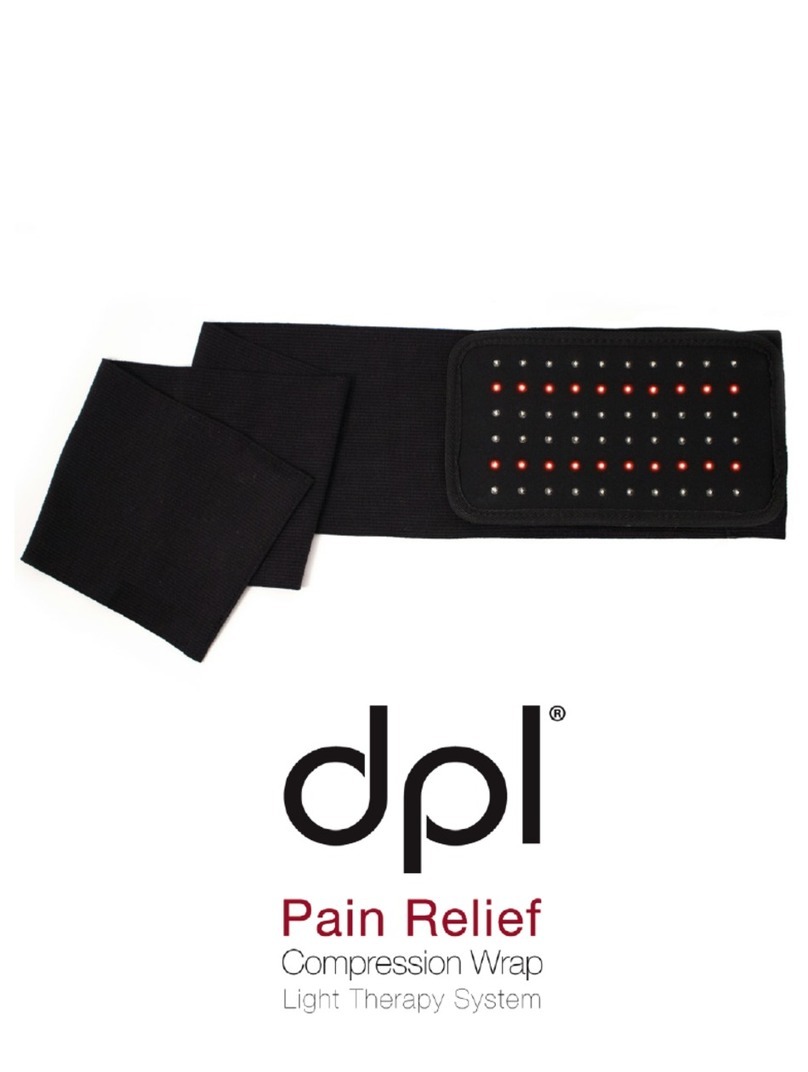
LED Technologies, Inc.
LED Technologies, Inc. DPLCOMWP quick start guide
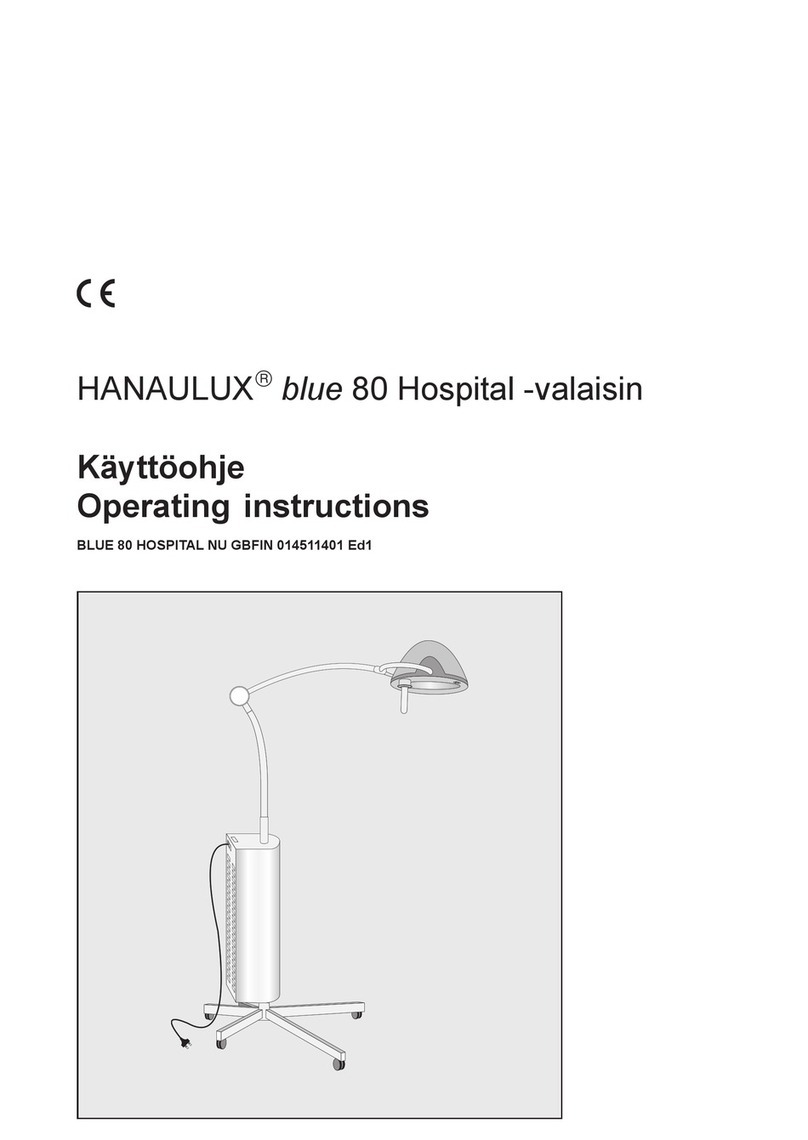
Maquet
Maquet HANAULUX blue 80 Hospital operating instructions
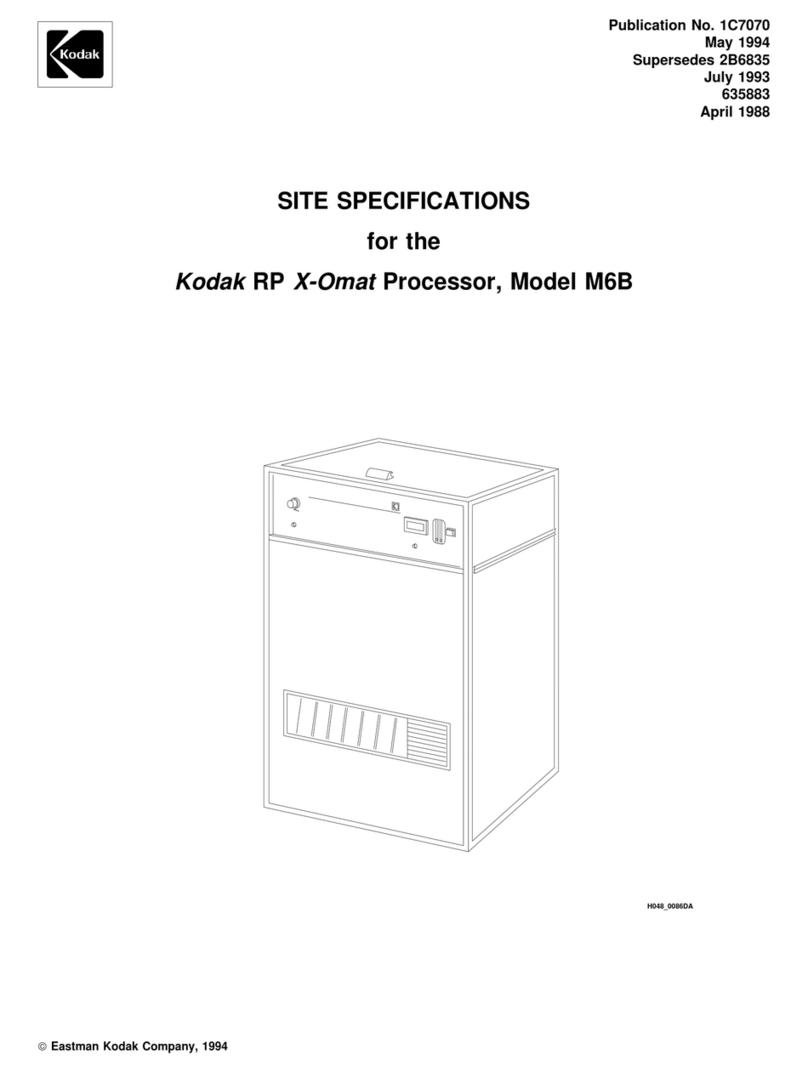
EASTMAN
EASTMAN Kodak RP X-Omat Processor M6B manual
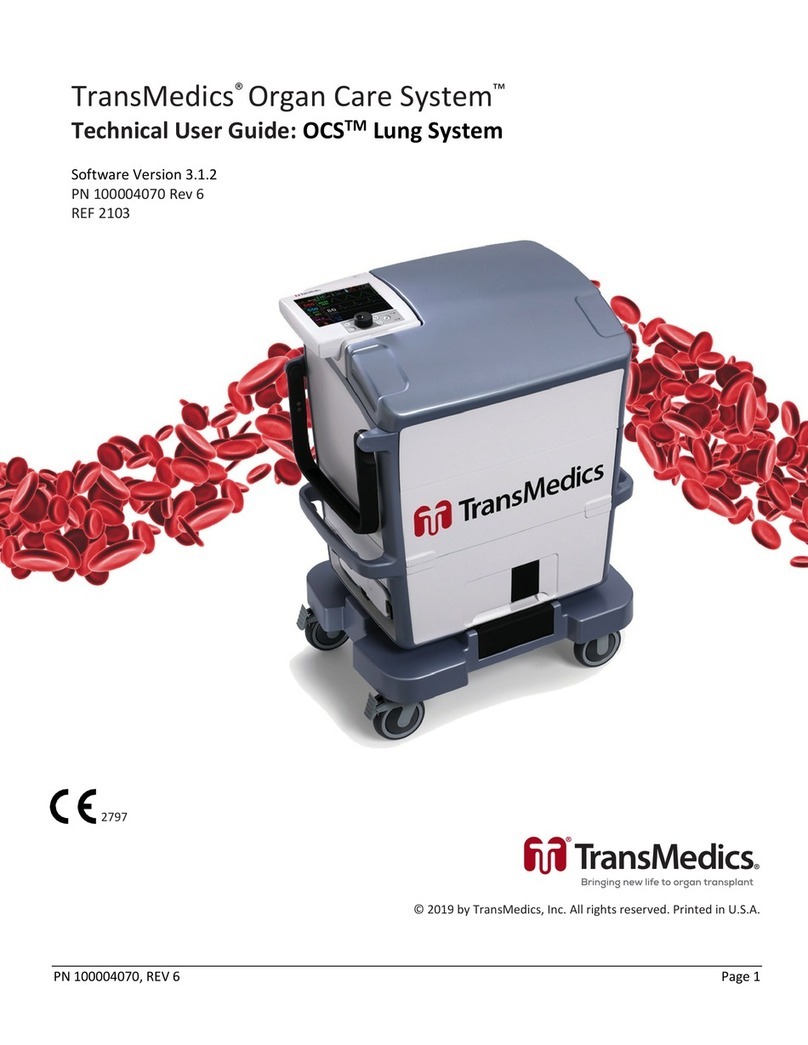
TransMedics
TransMedics Organ Care System Technical user guide
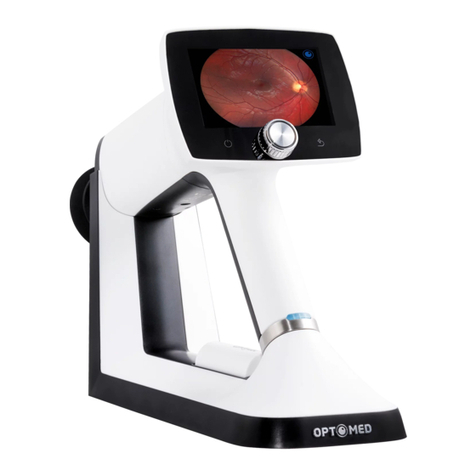
Optomed
Optomed Aurora user manual

Invacare
Invacare Izzo H340 user manual
